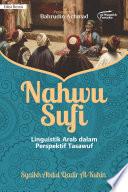
ECommerce in the Cloud
Bringing Elasticity to ECommerce
This practical guide shows architects how to incrementally adopt cloud computing (specifically public Infrastructure-as-a-Service and Platform-as-a-Service) and to marshal as much capacity as needed to handle peak holiday or special-event traffic. Advances in Cloud over the past few years now make it possible to run an enterprise-class eCommerce platform out of a cloud. This book helps architects leverage these advances by covering: Cloud service models (IaaS, PaaS, Software-as-a-Service) and deployment models (public, hybrid, private) ; the impact of omnichannel retailing on platform architecture and deployment architecture ; how to build an auto-scaling solution that can quickly add or subtract hardware in response to real-time traffic ; re-applying what you already know about security to cloud ; running a single eCommerce platform from multiple data centers, including several forms of multi-master ; building a hybrid solution or deploy your entire platform in the cloud ; application and deployment architecture for cloud native through legacy eCommerce platforms ; how to use Software-as-a-Service for eCommerce, including Content Delivery Networks and Global Site Load Balancing services.
- ISBN 13 : 1491946601
- ISBN 10 : 9781491946602
- Judul : ECommerce in the Cloud
- Sub Judul : Bringing Elasticity to ECommerce
- Pengarang : Kelly Goetsch,
- Kategori : Computers
- Penerbit : "O'Reilly Media, Inc."
- Bahasa : en
- Tahun : 2014
- Halaman : 285
- Google Book : http://books.google.co.id/books?id=2A5pAwAAQBAJ&dq=intitle:ecommerce&hl=&source=gbs_api
-
Ketersediaan :
This book helps architects leverage these advances by covering: Cloud service models (IaaS, PaaS, Software-as-a-Service) and deployment models (public, hybrid, private) ; the impact of omnichannel retailing on platform architecture and ...









